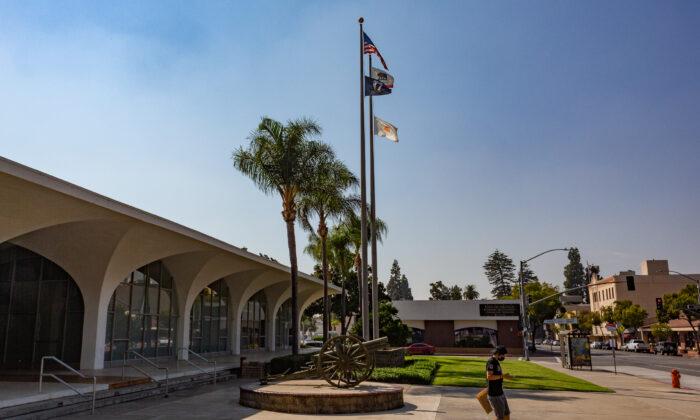City officials have put a halt to the dormitory-style construction projects plaguing neighborhoods in Orange, California.
“[This] is the first of multiple fronts the city is opening to ensure the long-term stability of our neighborhoods and preserve their unique characters,” Councilmember Arianna Barrios told The Epoch Times.
The ordinance—which was passed at a special meeting on Feb. 16 and amends the Municipal Code by adding definitions of dormitory, primary residence, and student housing—is a response to a number of recent applications seeking to radically alter the capacity of single-family dwellings.
In some cases, two- or three-bedroom homes requested transformation into seven- or eight-bedroom residences, according to the council’s agenda report. At least one applicant stated that the goal was to create student housing.
City Attorney Gary A. Sheatz said the bulk of the projects were happening on properties smaller than 12,000 square feet.
Disrupted Neighborhoods
Several citizens attended the special meeting to share how the character of their neighborhoods has been impacted by these constructions.Vince and Janette Lavalle said the current expansion of a building next to their home has raised concerns about excessive noise, an increase in trash, traffic, and parking issues—as well as a loss of privacy, decency, and property value.
“The current infestation of dormitory building projects ... will transform a quiet residential street into the beginning of fraternity row,” Vince said. “We live here where our kids go to school, we eat in the restaurants, some of us have businesses in the city of Orange, and we want to stay here. We had no idea that our neighborhood could be stolen from us.”
Janette said she was concerned with the constant back-and-forth traffic.
“We’re going to be seeing the traffic flow through our front door. All these people coming back all hours of the night, any time of day, with up to eight to 10 individuals,” she said. “I’m born and raised here, lived here my whole life. And I don’t want to see the community having this many homes turned into these dormitory styles.”
Sharon Welch, who lives on Cambridge Street not far from Chapman University, said she has experienced these same problems. “I bought a beautiful Craftsman on that street, and it’s becoming a nightmare,” she said.
She lives near three homes that have been converted into dormitories, she said. One residence has 10 bedrooms and 10 baths—and only one parking spot.
She described parties, beer cans and bottles littering the area, cars parked on front lawns, and verbal abuse from residents.
“This is what I’m living with. We see them constantly walking in with big, huge kegs of beer,” she said.
A Temporary Fix
The urgency ordinance is effective immediately but only lasts for 45 days unless the council votes to extend it. Extensions can only last for a maximum of 10 months, Sheatz said.The city attorney said he’d spoken with officials in other cities who are experiencing the same problem. He said that temporary solutions tend to provoke counter-responses from residents seeking to expand their property.
“When you zig, they zag,” he said. “So there is a constant evolution. ... Can we come back at a later date with additional zigs to their zags, if you will? The answer is yes, absolutely.”
Sheatz added that the temporary stay in construction buys city officials enough time to study development standards in the zoning code. They can then discuss further amendments with cooperation from the Planning Commission.
“This is an important step forward to taking back our neighborhoods,” Councilmember Chip Monaco said. “This timeout provides us a real opportunity to get a handle on that before this thing gets out of our control.”





